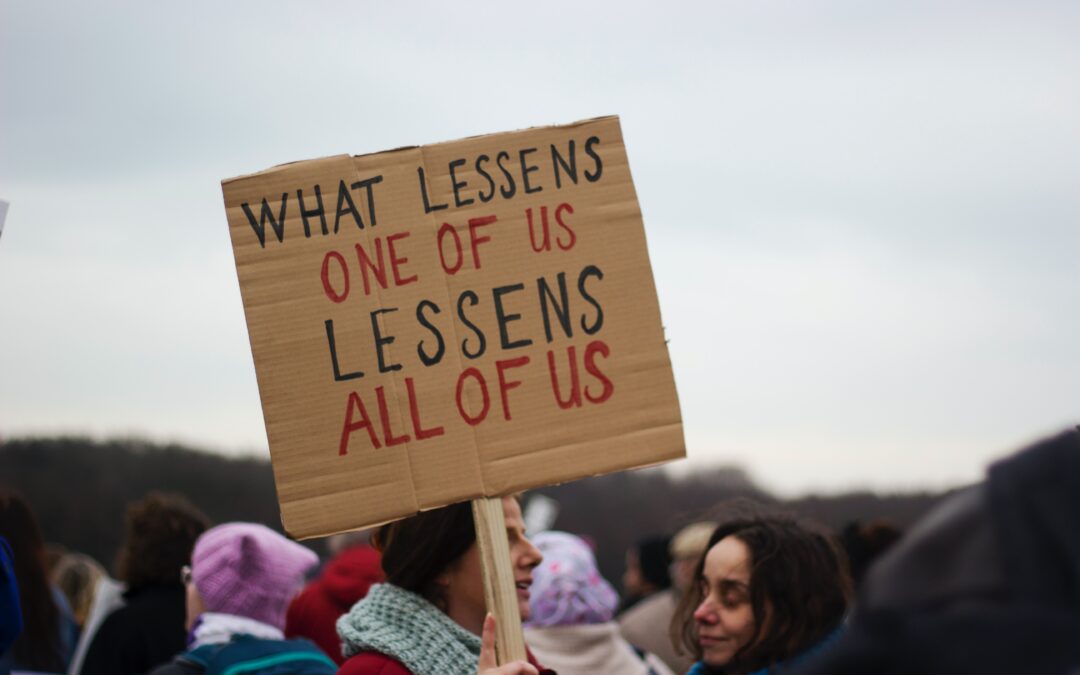Responding to microaggressions and racism can be very difficult. Whether you are a person experiencing or witnessing microaggressions or racism, the definitions and suggestions below can support you in determining the best course of action. It is important to note that racism is embedded in our systems and structures. The information below does not address systemic or structural racism, but rather focuses on interpersonal racism. Systemic and structural racism is addressed through addressing processes, procedures, policies and personal biases.
Microaggression: According to Dr. Derald Wing Sue, “microaggressions are the everyday slights, indignities, putdowns, and invalidations” that members of equity-deserving groups experience on a daily basis. Oftentimes, they occur in “interactions with well-intentioned, well-meaning people who are unaware they have delivered a putdown or invalidation.” Microaggressions can have long-term physical and psychological impacts.
Racism: Dr. Ibram X. Kendi defines racism as a “marriage of racism policies and racist ideas that produces and normalizes racial inequities.” Racist policies can be “written and unwritten laws, rules, procedures, processes, regulations, and guidelines that govern people” and “produce and sustain racial inequity between racial groups.” Furthermore, “a racist idea is any idea that suggests one racial group is inferior or superior to another racial group.”
Steps to consider when responding to microaggressions and racism:
1. Clarify:
Sometimes, it may be difficult to determine if what you have experienced or witnessed is a form of microaggression and racism. If there are other people around, asking them if they also heard the same comment, for example, can be a form of validation. Reaching out to loved ones for support can also be helpful if there are no witnesses.
2. Assess for risk and safety:
When you have experienced or witnessed microaggressions or a form of racism it is also important to assess the risk of your response or not responding.
3. Considerations before responding:
If you have decided to respond, there are many potential ways of addressing the behaviour. Some important factors to consider include:
- Timing: Do you want to respond as it is occurring or immediately after? Do you want to wait and respond after some time has passed?
- Potential Impact: Do you want the perpetrator to be aware that their behaviour is a form of microaggression or racism? Do you want your response to be an educational opportunity for everyone who is witnessing the behaviour? Do you want the perpetrator to be held accountable for their behaviour? Do you want an opportunity to express how you are feeling? Do you want to feel validated? Do you want to feel support/be supported?
4. Respond:
In “ A guide to responding to microaggressions,” Dr. Kevin L. Nadal highlights that there are main ways of responding.
- Passive-Aggressive: This can include using jokes, humour and sarcasm as a way of indirectly highlighting the behaviour. However, it is important to note that this type of response may lead to further escalation.
- Proactive: Nadal explains that victims may sometimes feel frustrated and angry and respond actively, such as by yelling back, which “may be a therapeutic way of releasing years of accumulated anger and frustration.”. Similar to a passive-aggressive response, this type of response may lead to further escalation.
- Assertive: This can include responding through sharing how the behaviour has impacted you and educating the perpetrator (and witnesses) how the behaviour is hurtful. Nadal highlights that by focusing on the action/ behaviour rather than the individual, you can create space for dialogue and learning
5. Document:
In many cases, particularly in situations where racism is taking place, it may be helpful to document and record microaggressions and racism. Having some form of record can help in holding the perpetrator accountable for their actions. If you are the witness, it is important to get the permission of the person who is experiencing the microaggression or racism before recording and/or sharing the recording.
6. Support:
Microaggressions and racism can have long term impacts on our health. If you are experiencing microaggressions and racism, it is important to seek support. This can include speaking with family, friends and loved ones, speaking with mental health professionals, reporting the behaviour (e.g. speaking with HR), sharing common experiences with others, and practicing other forms of self-care. If you have witnessed microaggressions or racism, if possible, follow up with the victim to ensure they have access to support. Organizations can also ensure that they have clear and accessible reporting and accountability measures in place so that people are aware that they can report microaggressions and racism when they occur in the workplace. Additionally, organizations can ensure that employees have access to different forms of support, such as access to mental health programs through their benefits.
Veza Global is always here to help. Don’t hesitate to contact us if you have any questions or need further guidance. You can also take a look through our Resources page and go through the information listed on how to become an inclusive community member.
References
1 – Derald Wing Sue, “Mini Moments with Big Thinkers,” Teachers College Columbia University, May 13, 2013. https://www.tc.columbia.edu/bigthinkers/segments/derald-wing-sue/
2 – Ibid.
3 – Ibram X. Kendi, “Extracts: Ibram X. Kendi defines what it means to be an antiracist,” Penguin Books Limited, June 09, 2020. https://www.penguin.co.uk/articles/2020/june/ibram-x-kendi-definition-of-antiracist.html
4 – Ibid.
5 – Ibid.
6 – Kevin L. Nadal, “A guide to responding to Microaggression,” CUNY FORUM 2:1 (2014) 71-76, https://ncwwi.org/index.php/resourcemenu/resource-library/inclusivity-racial-equity/cultural-responsiveness/1532-a-guide-to-responding-to-microaggressions/file
7 – Ibid.



 Ishu Kler is a photographer and Social Media Manager at Veza Global. She currently owns and operates a freelance photography company called Ishu Kler Creative where she specializes in branding, portrait and event photography. Born and raised in Vancouver, B.C., her love and passion for photography led Ishu to travel and live in New Delhi, India, where she obtained her Diploma in Photography. She also travelled to Costa Rica in 2015, where she obtained her Certificate in Documentary Photography from Photographers Without Borders.
Ishu Kler is a photographer and Social Media Manager at Veza Global. She currently owns and operates a freelance photography company called Ishu Kler Creative where she specializes in branding, portrait and event photography. Born and raised in Vancouver, B.C., her love and passion for photography led Ishu to travel and live in New Delhi, India, where she obtained her Diploma in Photography. She also travelled to Costa Rica in 2015, where she obtained her Certificate in Documentary Photography from Photographers Without Borders.
 Kelsey is a passionate Multimedia Designer & Communications Specialist with a diploma in Multimedia Production and over nine years of diverse design experience in different areas of the world including roles within multinational in-house marketing teams Microsoft and Technetix, marketing agencies and freelance. These experiences have led her to develop strong use of design principles, skills in Adobe Creative Cloud, knowledge in motion graphics and video editing, and knowledge in creating effective communication for a wide range of audiences and cultures.
Kelsey is a passionate Multimedia Designer & Communications Specialist with a diploma in Multimedia Production and over nine years of diverse design experience in different areas of the world including roles within multinational in-house marketing teams Microsoft and Technetix, marketing agencies and freelance. These experiences have led her to develop strong use of design principles, skills in Adobe Creative Cloud, knowledge in motion graphics and video editing, and knowledge in creating effective communication for a wide range of audiences and cultures.




